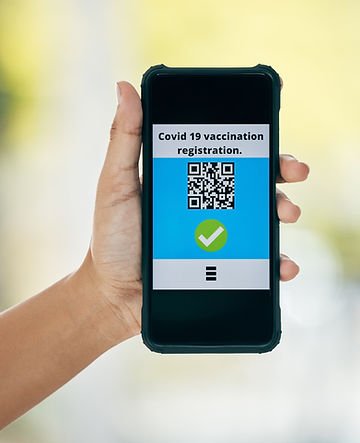How to Use Amazon FBA to Sell Digital Products
- Do a Product Plan that You Want to Market
- Do Protection and Authority
- Do Best-Selling Product Research Methods
- Do Some Keyword Searches
- Create a Product Based on the Needs of Your Potential Target Audience
- Launch an MVP (Minimum Viable Product)
- Create a Seller Account
- Write and Engage Descriptions
- Take Photos of Your Products
Do a Product Plan that You Want to Market
Now that you’ve learned the ropes of Amazon FBA for digital products, it’s time to dive into crafting a product plan that will leave your customers in awe. Grab your superhero cape and let’s embark on this thrilling adventure to create a plan that’s guaranteed to make your digital products sell like hotcakes!
Unleash your inner superhero by identifying your niche superpower – the unique selling point that sets you apart in the digital realm.
Perform some digital product reconnaissance by researching market trends, customer needs, and competition. Pinpoint a gap in the market that you can swoop in and fill with your fantastic digital creation.
No superhero is complete without a trusty sidekick, or in this case, an entire dream team of digital specialists.

Assemble a squad of professionals, from graphic designers and content creators to marketing experts, who will help you bring your digital product to life.
Remember, teamwork makes the dream work! Design a digital product that will leave your customers starstruck. Whether it’s an eBook, online course, or software, make sure it’s packed with value, relevant content, and an attractive user interface. Add a pinch of creativity, a dash of innovation, and voila – you’ve got yourself a digital masterpiece!
Don’t let your digital product become the next “Great Train Robbery” by pricing it too high or low.
Analyze the competition, consider the value you’re providing, and weigh it against production costs. Then, choose a pricing strategy that will attract customers like moths to a flame, while still filling your virtual pockets.
A superhero’s fortress is their sanctuary, and your marketing strategy is no different. Develop an invincible marketing plan that harnesses the power of social media, email campaigns, and influencer collaborations. This fortress will shield your product from the evil clutches of obscurity and propel it to new heights.
Be the hero your customers need and deserve by providing top-notch customer service.
Keep the lines of communication open, address concerns swiftly, and make sure your Amazon FBA listings are up-to-date and informative. A happy customer is worth their weight in gold!
No superhero ever stops learning, and neither should you. Regularly analyze your product’s performance on Amazon FBA, gather feedback, and make improvements. Continuously optimize your product plan to keep it fresh, relevant, and ahead of the competition.
Do Protection and Authority

In the world of digital product sales, you’re not just a seller – you’re a guardian, protecting your precious digital assets from the dark forces of piracy and unauthorized distribution. With the power of Amazon FBA, you can defend your digital empire like a true superhero. Let’s gear up and learn how to shield your products with the impenetrable armor of protection and authority.
First things first, get your digital product suited up with copyright and trademark protection.
Register your work to secure exclusive rights to your creation, ensuring that no villainous copycats can steal your thunder.
Don’t let your hard work fall prey to the digital underworld! Your digital product deserves a license agreement forged in the fires of legal expertise. This mighty document will outline the terms and conditions for using your product, granting customers the power to use it while ensuring they adhere to your rules. Remember, a well-crafted license agreement is the ultimate shield against misuse.
Enlist the power of Digital Rights Management (DRM) to protect your digital assets from unauthorized distribution.
DRM technology works like a high-tech security system, preventing unauthorized access, copying, or sharing of your digital product.
Think of it as your very own digital bodyguard, keeping a watchful eye on your precious creations.
Mark your digital territory with watermarks and metadata. These stealthy identifiers are like secret messages embedded within your product, helping you track its distribution and usage. In the event of unauthorized sharing or copying, your digital fingerprints will lead the way to the culprit.
Amazon FBA offers a range of features designed to protect your digital products from the clutches of piracy. Make use of Amazon’s DRM capabilities, robust file encryption, and secure delivery to keep your digital assets safe and sound. With Amazon FBA as your fortress, you can rest easy knowing your digital realm is well-defended.
Cultivate your brand’s authority by providing exceptional quality, reliable customer support, and engaging marketing strategies.
The more respected and trustworthy your brand becomes, the more customers will turn to you for their digital needs. In the end, your authority will be your ultimate weapon against the competition.
By combining these protective measures with the might of Amazon FBA, you’ll create an unstoppable force in the digital marketplace. Embrace your role as a guardian and defend your digital products with the fierceness and determination of a superhero. After all, with great protection comes great success!
Do Best-Selling Product Research Methods
In the realm of digital product sales, knowledge is power. Like a modern-day digital Sherlock Holmes, you must employ your detective skills to uncover the secrets behind best-selling products. With these five exhilarating research methods, you’ll be able to crack the code to success and transform your digital products into Amazon FBA superstars!

Unravel the Mystery of Amazon’s Best Sellers Rank (BSR)
Amazon’s Best Sellers Rank (BSR) is a treasure trove of information, revealing the top-performing products in various categories. Put on your digital magnifying glass and scrutinize these rankings to understand what makes these products tick. Learn from the best and apply their strategies to your digital product lineup.
Investigate Customer Reviews Like a Pro
Customer reviews are the pulse of the market – a window into the minds and hearts of your audience. Delve into the world of product reviews and dissect both the praise and criticism. Identify patterns and trends, and use this vital intel to fine-tune your digital products to better suit your customers’ desires.
Spy on Your Competition with Stealth
Unleash your inner secret agent and covertly observe your competition. What are they doing right? Where are they going wrong? By studying their strategies, strengths, and weaknesses, you’ll gather invaluable insights to outsmart and outmaneuver them, ultimately claiming victory in the digital arena.
Harness the Power of Social Media Sleuthing
Social media platforms are buzzing with opinions, trends, and ideas – a goldmine for any digital detective. Sift through the chatter to identify popular topics, influencers, and up-and-coming trends. By staying ahead of the curve, you can craft digital products that cater to the ever-evolving needs and desires of your audience.
Do Some Keyword Searches

Keywords are the secret codes that unlock the doors to customer search behavior. Master the art of keyword research by utilizing powerful tools like Google Keyword Planner and Amazon’s own search bar suggestions. By understanding the language of your customers, you can optimize your product listings and marketing efforts to attract more buyers. Like a digital sorcerer, you must harness the power of keywords to enchant your audience and charm the mystical Amazon algorithm. With the right incantations, your digital products will rise to the top of search results and bewitch potential customers.
When conducting keyword searches on Amazon FBA to sell digital products, it’s essential to identify terms and phrases that customers are likely to use when searching for products like yours. By optimizing your product listings with these keywords, you can increase visibility, attract more customers, and boost sales.
Here are some sample keyword searches to get you started:
1. “eBook best sellers”
2. “the online courses for self-improvement”
3. “digital planners and organizers”
4. “graphic design templates”
5. “stock photos and images”
6. “software for small businesses”
7. “fitness and workout programs”
8. “language learning resources”
9. “printable party invitations”
10. “cooking and recipe eBooks”
Remember, when conducting keyword research for your digital products, think about the terms and phrases your target audience would use. Use keyword research tools like Amazon’s autocomplete feature, Google Keyword Planner, or third-party tools like Helium 10 or Jungle Scout to generate relevant and high-traffic keywords for your listings. By doing so, you’ll optimize your digital products’ visibility and increase the chances of success on Amazon FBA.
Create a Product Based on the Needs of Your Potential Target Audience

Lights, camera, action! It’s time to create a digital product that dazzles and delights your target audience. Like a blockbuster movie director, you must craft a captivating experience tailored to the desires and needs of your potential customers.
Begin by conducting market research to unearth the secret desires, pain points, and aspirations of your target audience. Scour social media, forums, and review sections to understand their deepest needs. With this knowledge, you can create a digital product that speaks to their hearts and minds, leaving them craving more. Once you’ve identified your audience’s needs, it’s time to write a compelling script for your digital product. Whether it’s an eBook, online course, or software, make sure your content is engaging, informative, and tailored to your audience’s preferences. Aim to surprise and delight them at every turn, keeping them hooked from start to finish.
The visual aspect of your digital product is the stage upon which your masterpiece will unfold. Create an eye-catching design with stunning graphics, seamless navigation, and user-friendly interfaces. Like a movie set that transports viewers to another world, your digital product should immerse your audience in a captivating experience they won’t forget. Populate your digital product with a cast of unforgettable characters. These can be expert contributors, engaging narrators, or even mascots that guide your customers through the content. By adding a touch of personality and flair, you’ll create a memorable product that keeps your audience coming back for more.

Produce a Cinematic Experience
Assemble your digital dream team to bring your vision to life.
Collaborate with skilled professionals such as graphic designers, programmers, and content creators to ensure your digital product is polished, functional, and ready for the spotlight. Don’t settle for anything less than a show-stopping performance!
Once your digital product is ready for its close-up, roll out the red carpet and give it a grand premiere.
Utilize email campaigns, social media, and influencer partnerships to generate buzz and excitement around your product. Make your audience feel like VIPs by offering exclusive deals, sneak peeks, and behind-the-scenes content.
After your digital product has made its debut, pay close attention to audience feedback.
Address any concerns or suggestions, and continuously fine-tune your product to keep it fresh, relevant, and appealing. By adapting to the ever-changing needs and desires of your target audience, your digital product will remain a blockbuster hit.
Launch an MVP (Minimum Viable Product)
An MVP is a scaled-down version of your product or service that features just enough functionality to satisfy early adopters and gather invaluable feedback. The MVP approach allows you to test the waters, validate your business idea, and make improvements before committing to a full-fledged product launch.
Ready, set, launch! It’s time to blast off into the digital stratosphere with your very own Minimum Viable Product (MVP). Like a nimble rocket ship, your MVP will carry your digital product idea into orbit, gathering valuable data and feedback to fuel your journey to success.

Define your target audience Before you can create an MVP, you need to identify your target audience.
Who are the potential customers for your product or service? What are their needs, pain points, and preferences? Having a clear understanding of your target audience will help you tailor your MVP to meet their specific needs and increase the likelihood of adoption.
Identify the core features An MVP should include only the essential features that address your target audience’s primary needs or pain points.
To identify these core features, create a list of all the potential functionalities your product or service could offer. Then, prioritize these features based on their importance to your target audience, and select only the most critical ones for your MVP.
Develop the MVP Once you’ve identified the core features, it’s time to start developing your MVP.
This process will vary depending on the nature of your product or service, but the goal is to create a functional prototype that you can share with early adopters. Keep in mind that an MVP doesn’t need to be perfect – it just needs to demonstrate the value of your product or service and generate feedback for future iterations.
Test your MVP with early adopters After developing your MVP, it’s time to put it to the test.
Share your MVP with a select group of early adopters – individuals who are most likely to benefit from your product or service and are willing to provide feedback. This group can include friends, family, colleagues, or members of your target audience who have expressed interest in your offering.
Gather and analyze feedback As your early adopters interact with your MVP, gather their feedback on various aspects, such as usability, functionality, and overall value.
Encourage them to be honest and thorough in their assessments, as this feedback will be crucial for refining your product or service. Once you’ve collected enough feedback, analyze it to identify common themes, trends, and areas for improvement.
Iterate and refine your MVP Based on the feedback from your early adopters, make the necessary adjustments to your MVP.
This may involve tweaking features, improving usability, or addressing any other concerns that emerged during the testing phase. Remember that the MVP process is iterative, so be prepared to make multiple revisions before arriving at a final product.
Plan your full product launch Once you’ve refined your MVP and are confident in its value proposition, it’s time to plan your full product launch.
Use the insights gained from your MVP testing to inform your marketing strategy, product positioning, and pricing. By launching with a well-vetted MVP, you’ll increase your chances of success and minimize the risk of failure.
Create a Seller Account
Choose Your Identity: Superhero or Alter Ego?

When setting up your seller account, you’ll have the option to use your personal name or a business name. Are you a solo superhero or the leader of a dynamic digital enterprise? The choice is yours! Just remember that your chosen identity will be displayed to customers, so make sure it reflects your brand and mission.
Activate Your Amazonian Powers
Select the type of seller account that best suits your needs: Individual or Professional. Individual accounts are perfect for digital vigilantes looking to dip their toes into the Amazon FBA waters, while Professional accounts offer an array of advanced features for more seasoned eCommerce crusaders. Weigh the pros and cons, and select the plan that unleashes your full potential.
Complete Your Seller Account Training
To maintain your superhero status, you’ll need to complete a series of registration steps, including providing your personal or business information, tax details, and bank account information. Fear not, Amazon’s intuitive interface will guide you through the process with ease, ensuring your account is set up for success.
Familiarize Yourself with Your Secret Lair
Once your seller account is up and running, take some time to explore its many features and functionalities. From inventory management and sales analytics to advertising and promotions, your seller account is brimming with powerful tools designed to help you dominate the digital marketplace.
Set Up Your FBA Superpowers
Now that your seller account is in place, it’s time to enable your Amazon FBA capabilities. Follow the on-screen instructions to activate FBA, and marvel at the array of services that await: storage, order fulfillment, customer service, and more. With the might of Amazon FBA at your disposal, there’s no limit to what you can achieve!
Assemble Your Digital Dream Team
With your seller account established and your FBA superpowers activated, it’s time to assemble your digital dream team: your digital products! List your offerings in your seller account, optimizing your product listings with captivating titles, descriptions, images, and keywords to attract and engage your customers.
Write and Engage Descriptions

Descriptions are an essential component of effective communication, particularly in marketing and advertising. Whether you’re writing product descriptions, website copy, or social media posts, engaging descriptions can make all the difference in capturing your audience’s attention and driving sales. In this article, we’ll explore the art of writing engaging descriptions and provide tips for crafting compelling copy that resonates with your audience.
The first step in writing engaging descriptions is to know your audience.
Who are you writing for, and what are their needs and preferences? By understanding your audience, you can tailor your descriptions to speak directly to their interests and concerns. For example, if you’re selling fitness equipment, your descriptions should focus on the benefits of exercise and the convenience of working out at home.
Another key aspect of writing engaging descriptions is to use vivid language that paints a picture in the reader’s mind.
Instead of simply listing product features, describe how they will enhance the user’s life or solve a problem they’re facing. For example, if you’re selling a camera, you could describe how its high-resolution images will capture cherished memories and provide lasting enjoyment for years to come.
In addition to using descriptive language, it’s important to highlight the unique value proposition of your product or service.
What sets you apart from the competition, and why should customers choose you? This could be anything from superior quality and durability to innovative features or exceptional customer service. By emphasizing your unique selling points, you’ll differentiate yourself from the competition and create a compelling reason for customers to choose your offering.
Another effective strategy for writing engaging descriptions is to use storytelling.
People are naturally drawn to stories, and weaving a narrative into your descriptions can create an emotional connection with your audience. For example, if you’re selling organic produce, you could describe the farmers who grow the crops and the care and dedication they put into cultivating them. This humanizes your product and creates a sense of connection with the people who produce it.
Another important element of engaging descriptions is to be concise and to the point.
While it’s tempting to include every possible detail about your product or service, long descriptions can be overwhelming and cause readers to lose interest. Instead, focus on the most important and compelling aspects of your offering, and use bullet points or subheadings to break up text and make it easier to read.
Remember that engaging descriptions are not a one-time effort but an ongoing process.
As your business evolves and your products or services change, your descriptions will need to evolve as well. Stay attuned to customer feedback and adjust your descriptions accordingly, using testing and analytics tools to measure the effectiveness of different approaches.
Take Photos of Your Products
As an Amazon FBA seller, taking high-quality photos of your products is essential for attracting customers, conveying product features and benefits, and ultimately driving sales. In this article, we’ll explore the art of product photography and provide tips for capturing compelling images that showcase your products in the best light.
While you don’t necessarily need the most expensive gear on the market, you should have a camera that can capture high-resolution images with sharp details and accurate colors. Additionally, a tripod and lighting equipment can help you achieve consistent, professional-looking results. Once you have the necessary equipment, it’s time to set the stage for your product photoshoot. Choose a clean, uncluttered background that doesn’t distract from the product itself. A neutral background like white or gray is usually best, as it allows the product to stand out and provides a clean, professional look.

Adequate lighting is critical for capturing clear, detailed images that accurately represent your product.
Natural light is ideal, so try to schedule your photoshoot during the daytime and position your product near a window or other source of natural light. If natural light isn’t available or sufficient, consider investing in lighting equipment like softboxes or LED lights. When positioning your product for the photo shoot, take care to highlight its most important features and benefits. If your product has unique or innovative features, make sure they’re prominently displayed in the photos. Additionally, consider including photos of the product in use or in different contexts to give customers a better sense of its capabilities.
Another important aspect of product photography is editing.
While you don’t want to go overboard with editing and create images that look unrealistic or artificial, a few tweaks can go a long way in enhancing the overall quality of your photos. Consider adjusting brightness, contrast, and saturation levels to create images that pop and accurately represent your product.
The development of the digital world is increasingly widespread in 2023. Many business people are switching from conventional marketing to digital systems. Especially at the beginning of the year, many business people have implemented strategies to promote their products to be more developed and successful. Have you ever thought about knowing more about the strategy in 2023? Consult us, work now!

